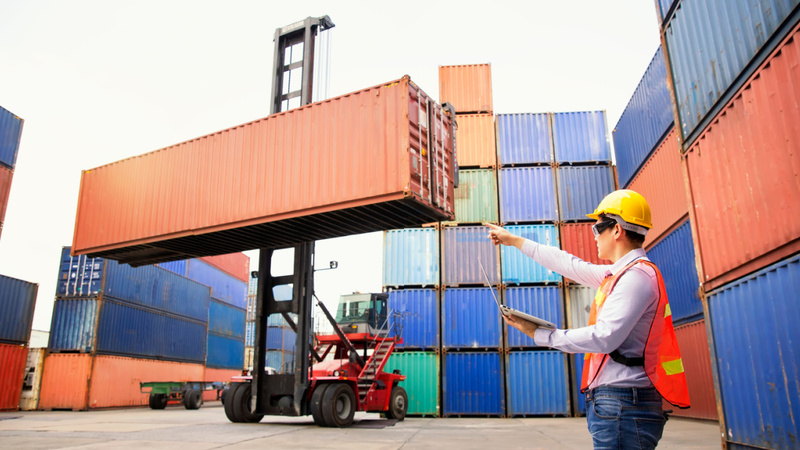In the intricate network of global trade and commerce, the seamless movement of goods from ports to final destinations is paramount.
Drayage, a crucial but often overlooked aspect of logistics, plays a pivotal role in connecting maritime transportation to inland distribution networks.
In this comprehensive exploration, we delve into the multifaceted role of drayage in logistics, its significance, challenges, and transformative impact on supply chain operations.
Understanding Drayage Logistics
Drayage logistics encompasses the short-distance transportation of goods, typically from ports, rail yards, or intermodal facilities to nearby warehouses, distribution centers, or final delivery points.
Drayage services involve the use of trucks, often specialized for container transport, to move cargo within a localized area.
This vital link in the supply chain serves as the bridge between maritime or rail transportation and the inland distribution network, facilitating the efficient movement of goods from point of entry to final destination.
The Importance of Drayage in Logistics
- Port Connectivity: Ports serve as the gateway for international trade, handling vast volumes of cargo from ships arriving from around the world. However, the efficient movement of goods beyond the port gates is equally critical.
Drayage services provide the essential link between maritime terminals and inland distribution points, ensuring that cargo flows seamlessly from ships to warehouses or transportation networks.
Without drayage, the efficiency of port operations would be compromised, leading to congestion, delays, and increased costs throughout the supply chain.
- Last-Mile Delivery: Drayage logistics extend beyond port terminals to include the final delivery of goods to their ultimate destinations.
In urban areas, where congestion and access limitations may pose challenges for larger trucks, drayage vehicles are well-suited for navigating narrow streets and delivering cargo directly to businesses or residential areas.
This last-mile connectivity is essential for meeting the demands of e-commerce, retail, and manufacturing sectors, where timely delivery is paramount for customer satisfaction.
- Supply Chain Efficiency: Drayage plays a crucial role in enhancing supply chain efficiency by minimizing transit times, reducing handling, and optimizing resource utilization.
With their localized operations and specialized equipment, drayage providers can expedite the transfer of cargo between transportation hubs and local facilities, streamlining the logistics process and improving overall productivity.
By integrating seamlessly with other modes of transportation, such as rail or ocean shipping, drayage logistics contribute to the seamless flow of goods across the supply chain.
- Flexibility and Adaptability: Drayage logistics offer flexibility and adaptability to meet the diverse needs of shippers and consignees.
Whether handling standard containerized cargo, oversized freight, or hazardous materials, drayage providers can tailor their services to accommodate a wide range of cargo types and transportation requirements.
This versatility is particularly valuable in dynamic supply chain environments where demand patterns and shipping requirements may vary, allowing businesses to respond swiftly to changing market conditions.
Challenges Facing Drayage Logistics
Despite its critical role in logistics, drayage faces several challenges that must be addressed to ensure its effectiveness and sustainability:
- Congestion and Urbanization: In densely populated urban areas, congestion and limited access can hinder drayage operations.
Traffic congestion, road closures, and parking restrictions can impact delivery schedules and increase operating costs for drayage providers.
Innovative solutions such as off-peak delivery hours, congestion pricing schemes, and dedicated truck lanes are essential to alleviate these challenges and ensure the efficient movement of goods in urban environments.
- Infrastructure Constraints: Inadequate infrastructure, including roadways, bridges, and intermodal facilities, can impede the efficiency of drayage operations.
Insufficient capacity at ports or rail terminals may lead to delays in cargo transfer, while outdated or poorly maintained roads can increase transit times and vehicle maintenance costs.
Investment in infrastructure upgrades and improvements is necessary to support the growth of drayage logistics and enhance supply chain connectivity.
- Regulatory Compliance: Drayage operations are subject to various regulatory requirements, including environmental regulations, safety standards, and labor laws.
Compliance with these regulations adds complexity and cost to drayage operations, particularly for small and medium-sized carriers.
Ensuring compliance while maintaining operational efficiency is a balancing act for drayage providers, requiring ongoing monitoring and adaptation to regulatory changes.
- Labor Shortages: The shortage of qualified truck drivers is a persistent challenge facing the trucking industry, including drayage logistics.
Competition for drivers, coupled with the demanding nature of drayage work, can make it difficult for companies to attract and retain skilled personnel.
Addressing labor shortages through recruitment, training, and retention initiatives is essential to sustain a capable workforce for drayage operations and ensure the continued flow of goods across the supply chain.
Conclusion
In conclusion, drayage logistics play a vital role in bridging the gap between maritime transportation and inland distribution networks, facilitating the efficient movement of goods and supporting global trade.
From port connectivity to last-mile delivery, drayage services are essential for ensuring the seamless flow of goods across the supply chain.
Despite facing challenges such as congestion, infrastructure constraints, regulatory compliance, and labor shortages, drayage logistics continue to be indispensable components of the logistics landscape.
As businesses strive to enhance supply chain efficiency, reduce costs, and meet customer demands, the importance of drayage logistics in enabling seamless logistics operations will only continue to grow.
By addressing the challenges and embracing innovation, the logistics industry can harness the full potential of drayage services to build a more resilient, efficient, and sustainable supply chain ecosystem.
